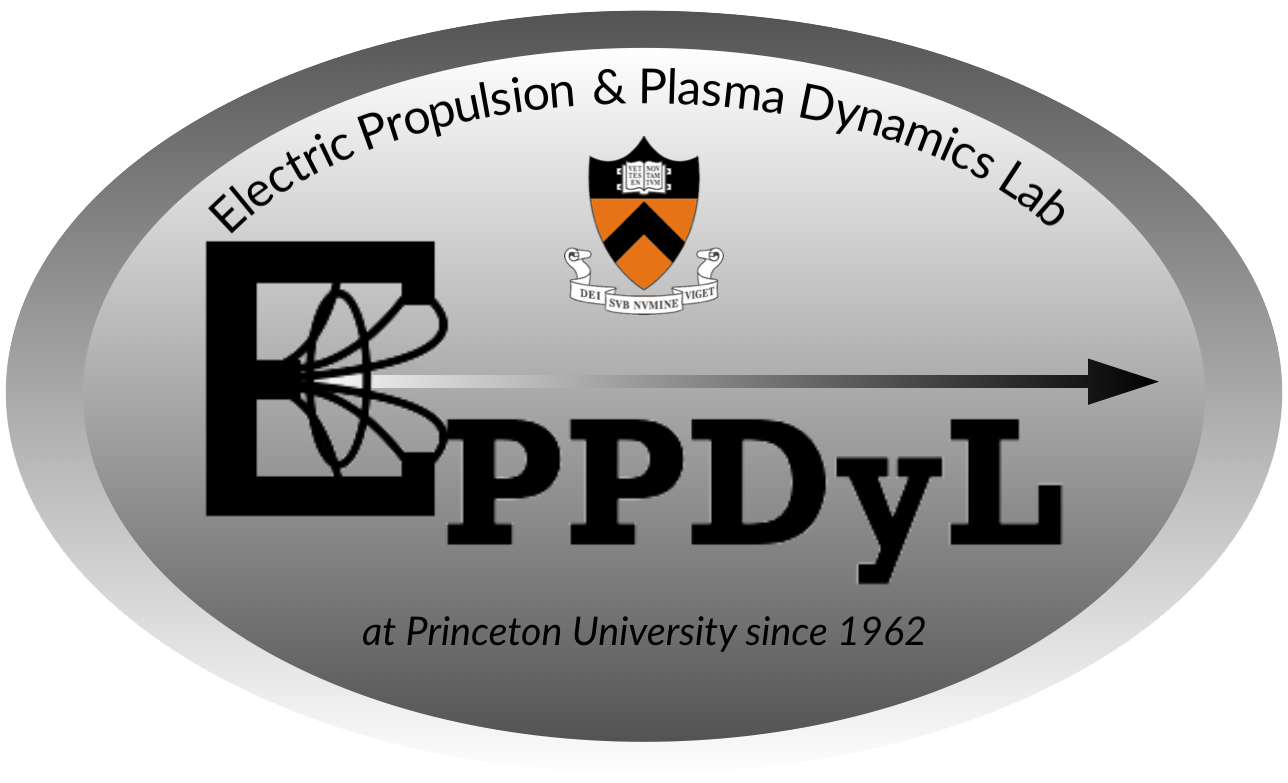AF-MPD Thruster Database
Motivation
The applied-field magnetoplasmadynamic thruster (AF-MPDT) database is a collection of performance data available in the literature spanning back to the 1960s. This database includes all measurements for which each of the following parameters is known: thrust, electrode current, electrode voltage, magnetic field strength, propellant, mass flow rate, background pressure, inner and outer solenoid radii, and the electrode geometry as indicated by the figure for each of three different electrode configurations.

Database
Data
Field explanation
| Quantity | Description |
|---|---|
| T_tot | measured total thrust in N |
| J | discharge current in A |
| B_A | applied magnetic field strength at the tip of the cathode in T, except for Tahara in JPP-1995-11-2 (at anode throat, where r=ra0) and Fradkin in Fradkin_MHD_Symposium (where it is at the anode exit plane) |
| mdot | mass flow rate in mg/s |
| error | thrust error in N |
| Ra | maximum radius of the anode in mm |
| Rc | radius of the cathode in mm |
| Ra | minimum radius of the anode in mm |
| La | length of the anode, cylindrical: backplate to exit plane, frustum: from where it’s smallest to where it’s biggest, in mm |
| Rbi | inner solenoid radius in mm |
| Rbo | outer solenoid radius in mm |
| Lc_a | length of the cathode, cylindrical: from backplate, frustum: from where the anode is smallest or backplate if equivalent, in mm |
| V | discharge voltage in V |
| Pb | background pressure in mTorr |
| propellant | propellant |
| source | abbreviated bibliography for where the data was found |
| thruster | short name for thruster |
| A_mat | anode material |
| C_mat | cathode material |
| config | {cyl, cone, cylcone} cylinder, cone, or cylinder followed by cone to exit |
| l_st | If cylcone config, this is the length of the straight or converging section in mm of anode preceding the flare based on mass injection location. Else, NA except in the 3kW_Nagoya thruster (see notes) which is a cone followed by a cylinder. |
Notes
The notes can be found here.
If the magnetic field strength at the anode exit plane is given, it is included in the notes. Otherwise, make assumptions based on the geometry of the solenoid.
I have not included thrusters using mixed propellants or thrusters with atypical or non-coaxial geometries, including the hybrid plasma thruster (HPT), rectangular thrusters, and permanent magnet thrusters.
Other information worth including in future versions would be:
- more electrode and magnet geometry (cathode tip shape, axial magnet position)
- propellant injection location
- variant configurations (permanent magnet, rectangular, HPT)
